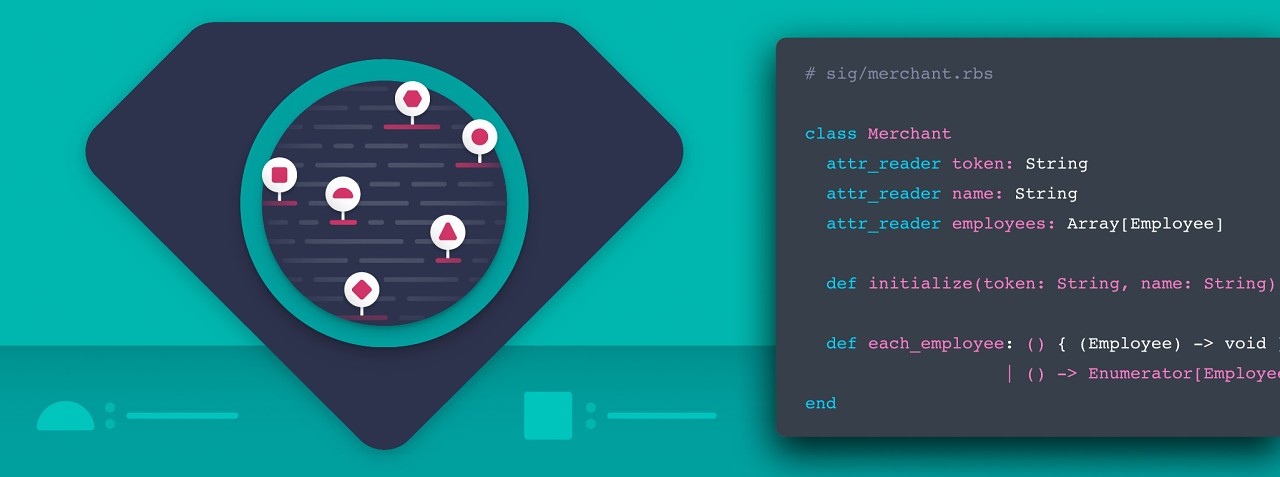#512 — July 30, 2020 |
🎉 At the end of this week's issue we have an interview with the man, the legend, Michael Hartl of Rails Tutorial fame – don't miss it 😄 |
Ruby Weekly |

|
|
The State of Ruby 3 Typing: Introducing RBS — Back in May we mentioned RBS, a language being used for type signatures in Ruby programs, but this is a much more accessible introduction to the concepts around it. RBS and the tooling around it will ship with the eventual Ruby 3. Soutaro Matsumoto |
|
RubyMine 2020.2 Released — RubyMine is a commercial Ruby IDE but popular enough for a release to be noteworthy :-) There’s a new UI feature for tracking and listing issues within a file of code, support for the Liquid template language, and full GitHub pull request support. JetBrains |

CI/CD with Docker and Kubernetes eBook by Semaphore — Download the free eBook and learn how to deliver cloud-native applications at high velocity. Semaphore sponsor |
|
TTY::Logger 0.4.0: Structured, Attractive Logging on the Terminal — Nice looking colorized and formatted logging. Part of the popular TTY suite of libraries, which I encourage you to check out when you get the chance. There are libraries for colorizing output, moving the cursor around, writing big fancy text and more. Piotr Murach |
|
💻 Jobs |
|
Senior Rails Developer (Remote/Flexible) — YourGrocer delivers fresh food from local independent shops, and we're looking for an experienced developer to join our growing team. YOURGROCER.COM |
|
One Application, Hundreds of Hiring Managers — Use Vettery to connect with hiring managers at startups and Fortune 500 companies. It's free for job-seekers. Vettery |
ℹ️ Interested in running a job listing in Ruby Weekly? There's more info here.
📘 Articles & Tutorials |
|
To Ariel Juodziukynas |
|
Be Cautious with Coercion Methods — A quick look at Ruby’s built in coercion methods (all those mostly starting with Piotr Solnica |
|
Best-Practices on How to Speed Up Your Postgres Queries. Free eBook pganalyze sponsor |
|
How I Write Tests for My Rails (API) Apps — “My strategy of writing tests for Rails applications. Integration tests over unit tests. No to 100% test coverage.” Prathamesh Sonpatki |
|
Some SQL Tricks of an Application DBA — A neat article with a variety of non-trivial tips for database development. If you ever touch SQL, you should find something useful here or at least enjoy the exploration. Haki Benita |
|
A Silly Thing You Can Do with the Ruby Parser — ‘Silly’ is like catnip to me. The trick here is defining a class in a Penelope |
|
▶ Noah Gibbs on When Not to use Rails Rails with Jason Podcast podcast |
🛠 Code and Tools |
|
RSpec Queue: Optimally Distribute and Run RSpec Suites Among Parallel Workers — Speed up those CI builds by running your RSpec suites across workers in parallel, all controlled by a centralized queue. Skroutz |
|
ImageInfo: Finds The Size and Type of Images from the Web — We first linked this 5 years ago but it’s just had an update. It tries to find out image size info for images over HTTP by fetching as little of the file as possible. Pierre-Louis Gottfrois |
|
Prevent Outages with Timely Upgrades of Your Rails Project — Outdated Rails dependencies don't mesh well with cloud dependencies. Act before your cloud provider leaves you dangling. Kodius sponsor |
|
To ERB and Beyond: What’s New in Bridgetown 0.16 “Crystal Springs” — Bridgetown, a Ruby static site generator, has added plugins for Haml and Slim, which you can use with their Liquid templates for great good. Jared White |
|
Counter Culture: 'Turbo-Charged' Counter Caches for Rails Apps — Boasts improvements over standard Rails counter caches. Magnus von Koeller |
|
Torch.rb: Deep Learning for Ruby — A way to use Torch, an open source machine learning framework, more commonly associated with Python. Andrew Kane |
|
dyndnsd.rb 3.0: A Small, Extensible DynDNS Server Powered by Rack Christian Nicolai |
|
